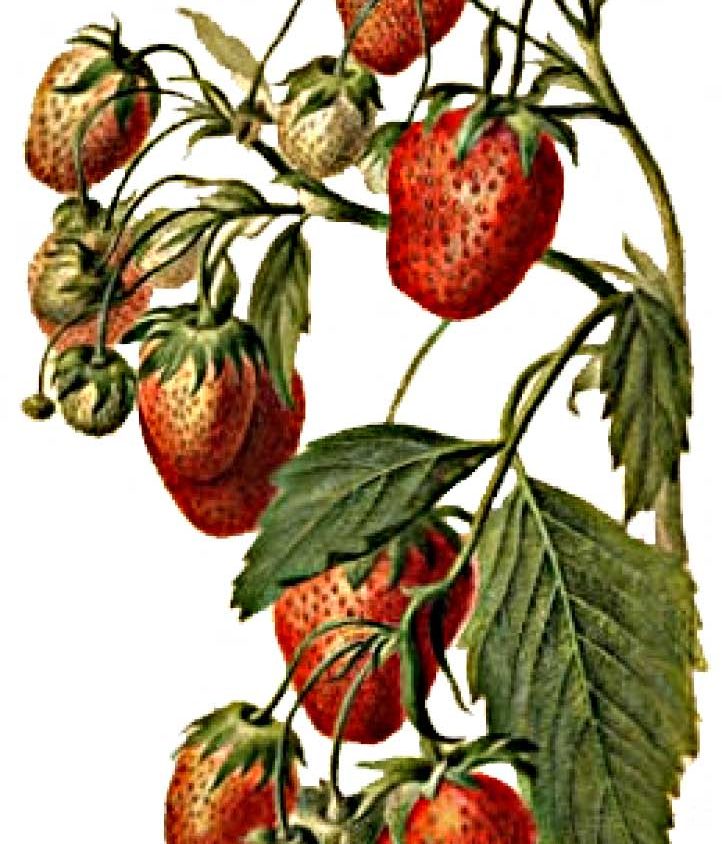Hi everyone! I’m Carol Cruzan Morton, your friendly new science columnist at Eugene Weekly. Take a walk with me on the WildType name. In research, “wild type” means the normal, naturally occurring standard for comparison to another version of the same thing, such as a gene or another feature of a plant or animal.
It’s a quaint old term, because there’s no such thing as normal. A better inspiration might be Wild Type, the short-lived cover band composed of cancer biologists who in their day jobs shined the light of discovery for all of us dancing in the dark.
In coming months, we’ll roam over topics from astronomy to zoology. For our first column, we have a yummy genetics story about the origins of sex — at least in strawberries — fresh from the labs of Oregon State University researchers and their collaborators at University of Pittsburgh.
The Secret Sex Life of Strawberries
We all need a break from the sex lives of Supreme Court nominees and chief executives. In fact, at this point in the news cycle, you may be asking yourself the same question that has perplexed evolutionary biologists for decades: Why two sexes? It’s risky and expensive — in politics, business and biology.
Animal XY sex chromosomes are too old to answer this question, so researchers turned to strawberries, which have some of the youngest sex chromosomes among flowering plants and animals. Using modern voyeuristic techniques they have literally caught strawberries in the act of transitioning into two sexes.
“To me, the wow-cool aspect is that this is really young on the evolutionary time scale,” says OSU evolutionary biologist Aaron Liston, who collaborated on the study. For these fresh sexing things we call strawberries, “young” means only a few million years old.
Separate sexes may seem fundamental to nature — woman and man, hen and rooster, cow and bull — but they’re an oddity for most plants. After all, finding a mate is tough enough when you’re not rooted in one place. Most flowering plants are hermaphrodites — which contain both male and female sex organs. In other words, they complete themselves. Only about 6 percent have split into different sexes, but these two-sex plants are important to people, such as garden asparagus, papaya, hops, marijuana and some strawberries.
Liston’s Pittsburgh collaborators have been trying to pin down the sex genes in strawberries for about 20 years. They looked at Oregon beach strawberries and two sister species found across the country.
Then came the first strawberry genome project (cue superhero music here). That work brought the two labs together and the results gave them a needed scientific reference point.
In a brute force approach, they sequenced 60 strawberry plants from three strawberry species evenly divided between males and females.
The sexual identity of wild strawberries appears to ride on a patch of genes that has jumped between chromosome 6 versions, carrying a few more genetic neighbors each time. What’s more, with each jump, the number of female-specific genes on the sequence increased. Those traveling “souvenirs” increased the difference between the sex chromosomes, the researchers speculate. In humans and other animals, such sex-specific differences eventually became extreme.
I know what you’re thinking now: How can they know all that from 60 plants when it takes 10,000 genomes or more to look for disease-causing genes in people?
“Diversity,” Liston tells us. “There’s less diversity in humans than in strawberries.”
Human genomes have so much in common, it’s hard to find culprits. Also, a lot of human diseases involve complex genetics. Male and female is relatively straightforward, genetically speaking.
But don’t look for the special male and female strawberries at your grocery stores or farmers’ markets any time soon. In a final plot twist, the hybrid descendants of the wild strawberries in the study have all had the sex differences bred out of them.
Got tips, story ideas, or science events to list? Contact Carol Cruzan Morton at WildTypeOregon@gmail.com. Note: An earlier version of the strawberry sex story by Morton was published on the news site of the weekly journal Science.
